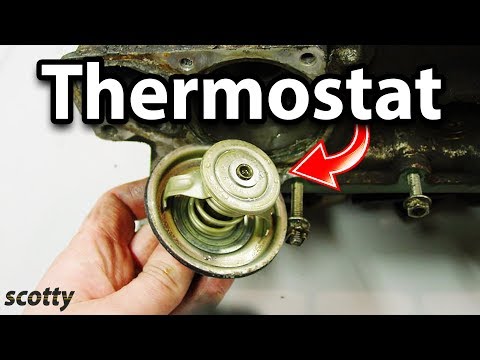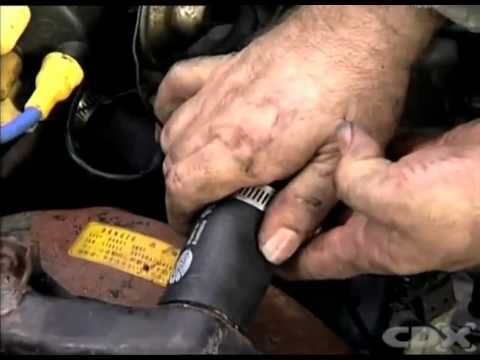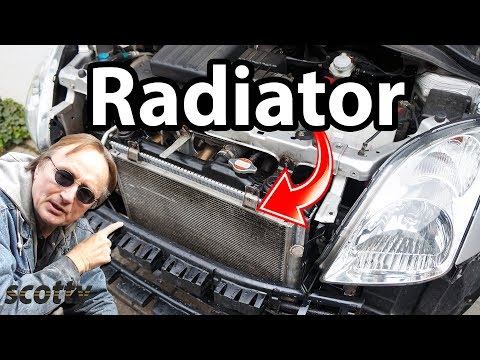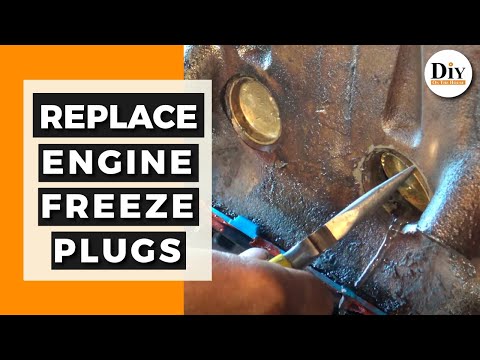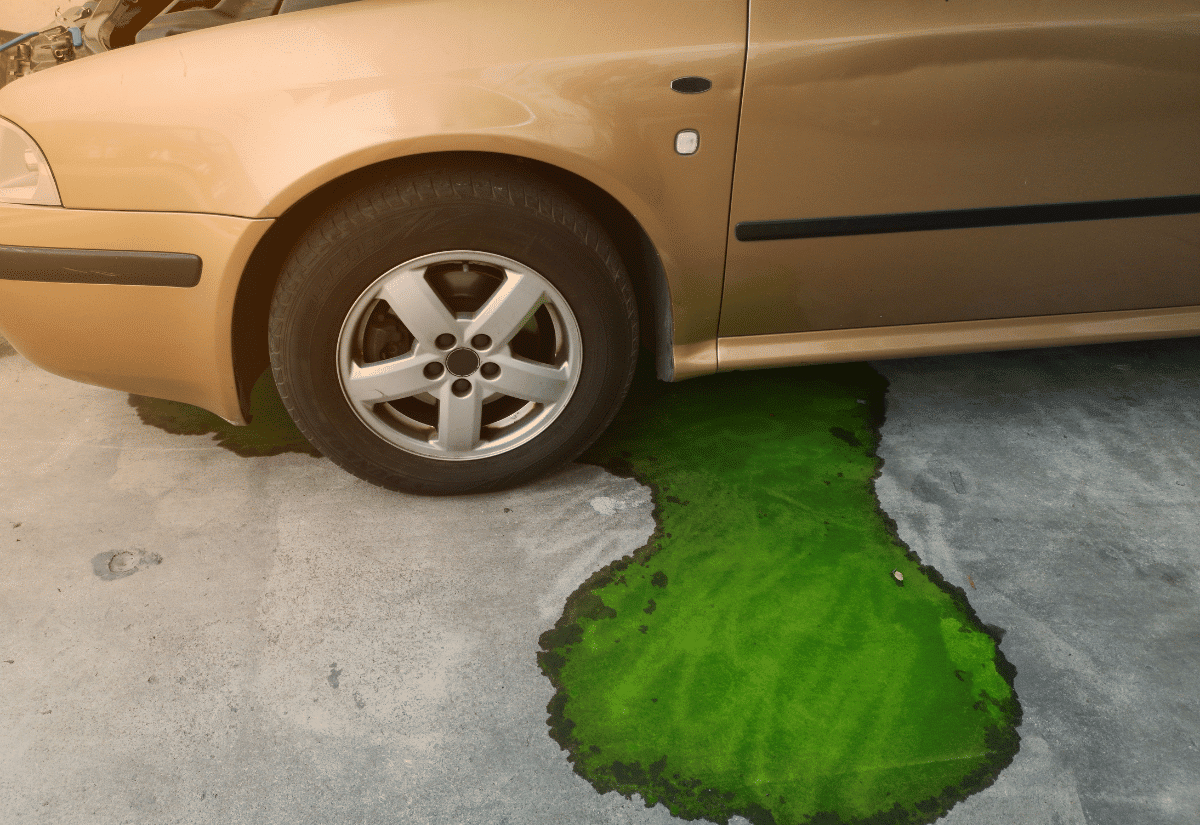
Coolant leaks are some of the most annoying problems you can face with your car. They are easy to ignore until it becomes a big problem.
What’s worse, sometimes you’ll see coolant pouring out the bottom of your engine compartment. Maybe you’re trying to refill your radiator or expansion tank, and coolant is pouring out the bottom of the car as fast as you can pour it in. Scary, right?
You may think something catastrophic, like a cracked cylinder head or block, has happened. While that looks very bad, normally there will be no huge reason for concern. It’s likely a hose that’s become busted, sprung a big leak, or worked itself loose.
Occasionally, coolant pouring out from the engine can be a precursor to more expensive repairs. Those include radiator, freeze plug, or head gasket replacement.
Further, we’ll explore several issues that can cause coolant to pour out the bottom of your car and how to fix them.
How to Spot a Coolant Leak
How to know if the liquid pouring out the bottom of your car is engine coolant? Coolant or antifreeze is generally a sweet-smelling, bright-colored liquid. The most common colors of engine coolant are pink, yellow, and green, although it can take on other colors depending on the manufacturer.
Coolant leaks also tend to leave behind a trace in the form of a white residue similar to limestone. This can make it easier to pinpoint where the leak is coming from.
Of course, all this assumes you have coolant in your car. If you are running straight water (which you shouldn’t), then look for an odorless, colorless liquid!
Why is Coolant Pouring Out from the Bottom of My Car?
If coolant is pouring out the bottom of the car as fast as you can pour it in, something is seriously wrong with the cooling system in your car. That could mean some serious engine damage, although it will often be simpler, like a loose hose connection.
1. Bad or misplaced radiator cap
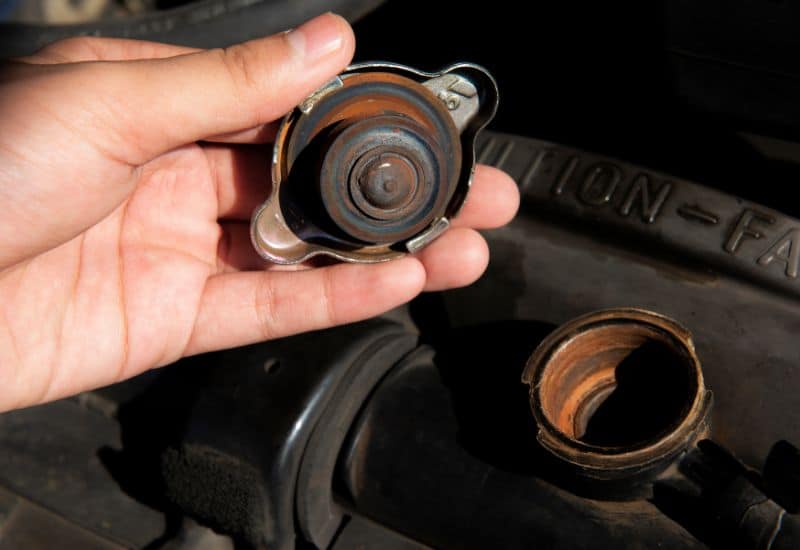
The first place you should look is the radiator cap. It is a spring-loaded cap that sits on top of the radiator. Its job is two-fold. Firstly, it seals the coolant inside the radiator at a higher pressure, which increases its boiling point. Secondly, it gives coolant or steam a place to go if the pressure in the system gets too high, preventing it from blowing out a hose or pipe. If the cap is loose or misplaced, it could cause water to spill into the ground.
If water is only pouring out when the engine is running, then you probably have one of two problems. A bad radiator cap that is no longer sealing correctly is the likely culprit. In this case, replacing the radiator cap would fix the issue.
Conversely, it could also be that the radiator cap is doing its job correctly, and overpressure in the system pushes coolant out through the radiator cap or coolant surge tank. This is caused by either an engine overheating condition, a clog in the system, or a blown head gasket that is leaking combustion gases into the cooling system.
2. Busted or misplaced coolant hose or pipe
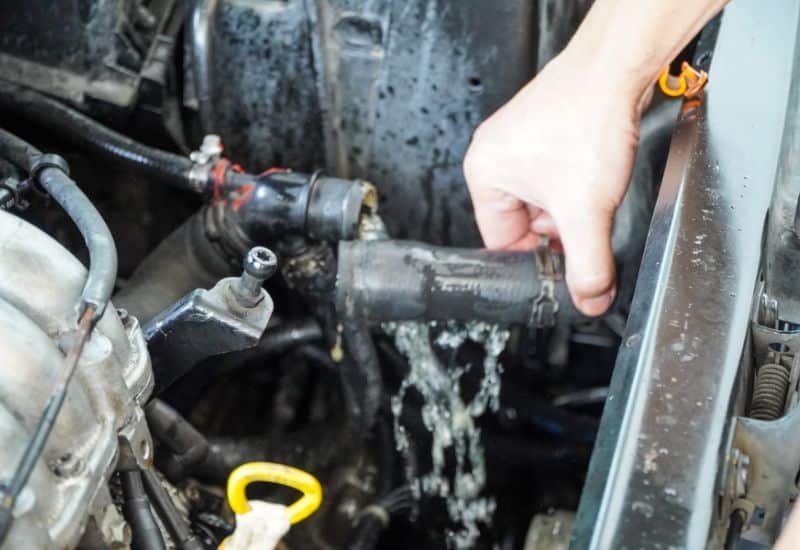
The second most likely source of water that is pouring onto the ground is a bad hose or pipe connection. Double-check that every hose is securely clamped and tightened to spec, but be careful not to go overboard. Over-tightened clamps will also spring leaks, as they will eat through the rubber hoses. Hoses can sometimes be blown open if the pressure in the lines is too high, either due to a severe clog in the system or a head gasket that is leaking combustion gases into the coolant system.
Your car’s coolant system also likely comprises a few metal sections, which can rust over time, especially if you run straight water in the cooling system as opposed to an antifreeze plus de-ionized water mix. The rust in the pipes can cause them to crack and spring a leak, requiring the entire section to be replaced.
3. Leaking thermostat housing
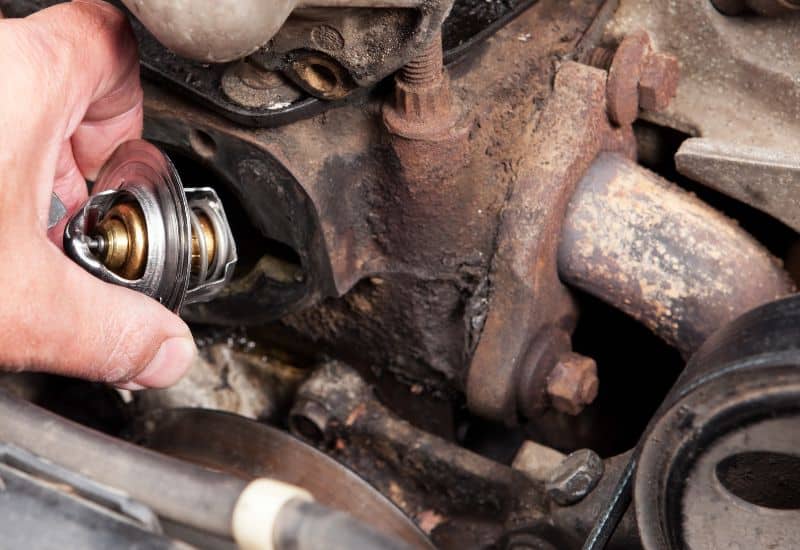
The thermostat is a spring-loaded valve whose job is to prevent coolant from flowing into the radiator when the engine is cold while allowing it to flow freely when the engine is hot. This allows the engine to warm up to operating temperature quicker than if the coolant was constantly flowing through the radiator. Its housing is located near the cylinder head, at the end of the top hose that connects the radiator to the engine and is a common source of leaks.
4. Broken radiator
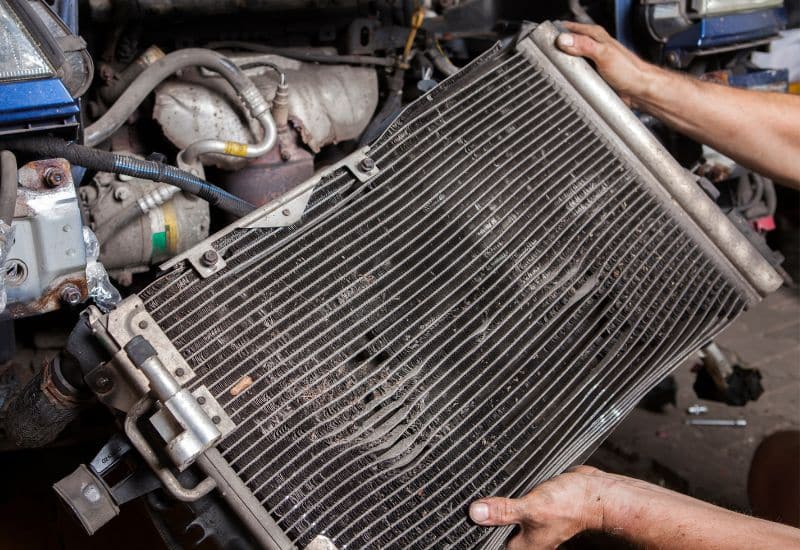
The radiator is a heat exchanger whose job is to reject heat from the coolant into the exterior air. To do so, coolant flows through a series of tubes on the radiator, transferring heat to the air as it flows through it, either due to the forward movement of the car or thanks to the cooling fans. The radiator sits in the front of the car, so it is usually one of the first components to be damaged when there is a collision. If the car has been in a frontal accident, then this is a likely cause of coolant pouring out of the engine.
5. Leaking water pump gasket
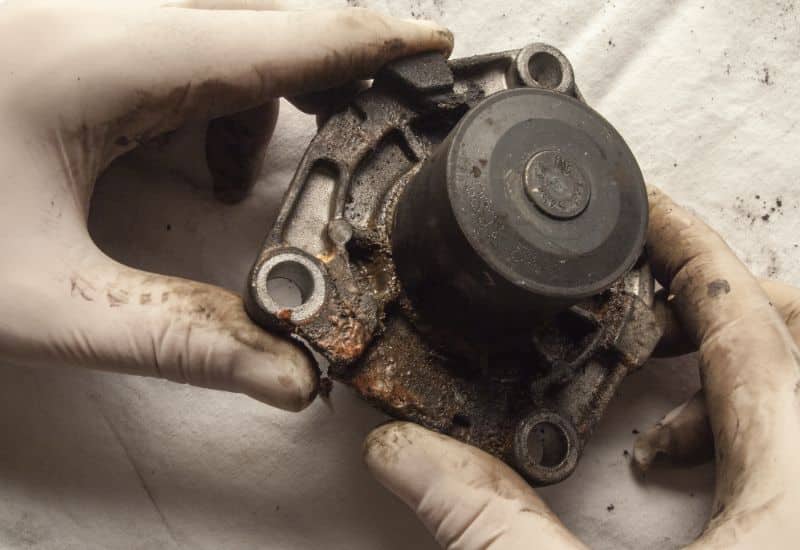
Another common source of coolant leaks from the bottom of the engine is a failing water pump gasket. The water pump is usually located inside the engine’s timing cover, along with the timing belt or chain. If the gasket that seals the water pump fails, it will cause water to pool inside the timing cover until it eventually leaks out. Sometimes the water pump can be located externally, in the front of the engine, driven by the auxiliary belt that drives the fan. In this case, a leak in the gasket will drip directly into the ground.
6. Blown freeze plug(s)

If you have straight water in your cooling system and your car has been sitting in freezing cold temperatures, there’s a chance a freeze plug has blown. You see, when water freezes, it expands. If it were to freeze inside the engine with nowhere to go, its expansion could crack the cylinder block or heads. Freeze plugs are small metal caps whose job is to give ice in the engine a way out, protecting expensive engine components. Once the water starts freezing, it pushes out the freeze plug(s), giving it a direction to expand into.
The bad news is that when the temperature rises, and the ice melts back again, water will flow out of the block through the hole left behind by the freeze plug and onto the ground. At this point, the only option is to have the car towed to a shop to have the freeze plugs put back in place.
7. Blown head gasket
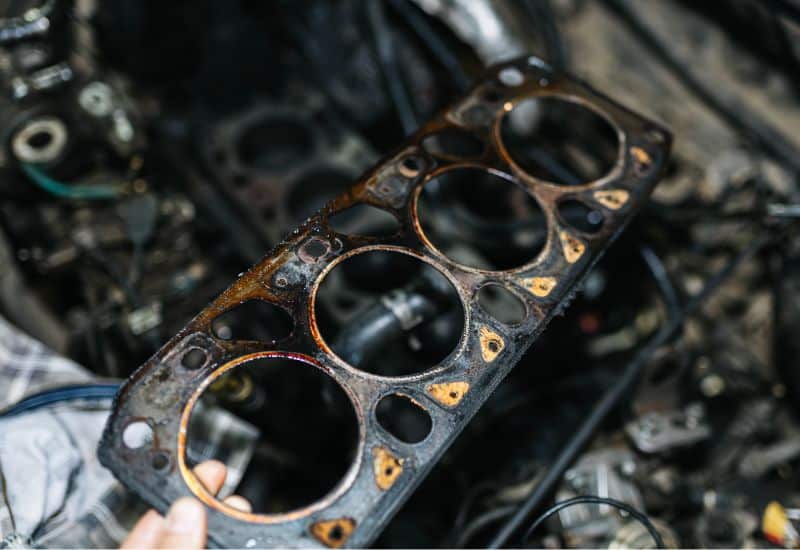
The head gasket is a plate of metal and rubber material that sits between the cylinder block and head(s). Its job is to seal the combustion gases, lubricating oil, and coolant inside the engine. Without a good head gasket, these fluids could enter the cylinders, leak outside, or into each other. Particularly, if the head gasket springs a leak in the coolant passages, the engine coolant will get in places it isn’t supposed to be.
More often than not, this leakage is internal, meaning the coolant will leak into the cylinders or into the oil. In some cases, however, the leak can be external, so coolant will leak outside of the engine and find its way onto the ground through gravity.
How to Fix Coolant That is Pouring Out from the Bottom of the Engine
Fixing the leak causing coolant to pour into the floor requires first pinpointing the exact location of the leak. The best way to do that is to carefully look around the engine bay or at the engine from below the car, searching for the telltale bright coolant color or its traces. If coolant is pouring into the ground fast, finding the source shouldn’t be challenging. Once you’ve done that, fixing the problem usually entails replacing the faulty component or connection.
1. Replace the radiator cap
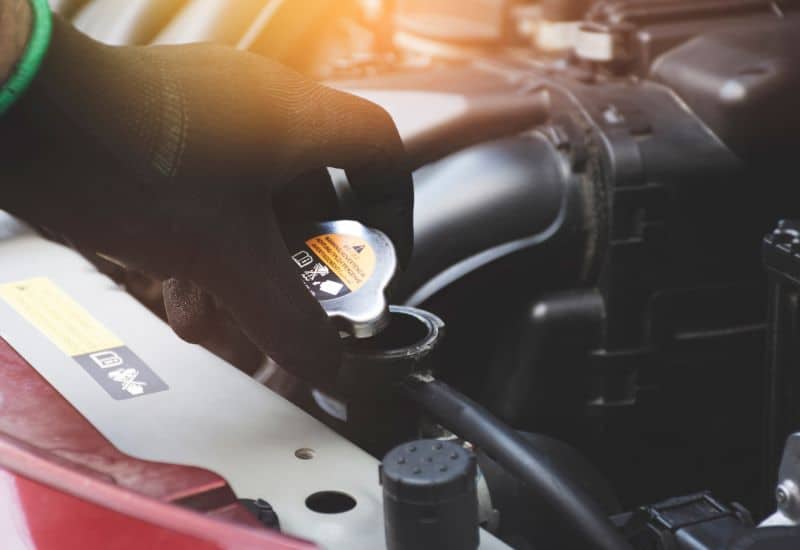
If you have diagnosed a leaking radiator cap as the source of your coolant loss, then you are in luck, as this is the cheapest fix for this issue. The part will usually cost between $10 and $25, and replacement is as easy as removing the old cap and putting the new one in. However, ensure the engine is stone cold before removing the old radiator cap; otherwise, you risk serious burns from the hot coolant and vapor!
2. Replace the thermostat and gasket
The thermostat is another cheap part, which normally costs between $25 and $50. Replacement is often easy, too, since it is generally located at the top of the engine and readily accessible. Just remove the screws that hold the top of the housing in place to remove it, take off the thermostat and gasket, then put the new one in.
3. Replace cooling hoses or pipes
This is probably the next simplest fix. A replacement rubber coolant hose will be relatively cheap, while a metal pipe could run upward of 100$ if you buy directly from the manufacturer. The labor costs involved will depend on how difficult the damaged hose is to access. If it is buried deep within the engine compartment and requires disassembly of other components to get to it, then the costs can go up quickly. Nevertheless, this is normally a rapid job.
4. Replace the radiator
Older radiators featured metal end tanks that could be welded if they were leaking. Modern designs are either plastic or aluminum, which could make this process more involved. Still, there are still some epoxy-based solutions to repair leaky radiators temporarily, but if water is pouring out at a very fast rate, chances are you will have no choice but to replace the whole part. A new radiator might cost you in the region of $200 to $500 depending on make and model, and labor may take the total replacement cost close to $1,000.
5. Replace freeze plugs
Freeze plug replacement is one of those annoying jobs where you are looking at several hours of labor to replace a one-dollar part. Because they are placed deep in the cylinder block, access to the freeze plugs can be a real pain. Depending on which plug is blown and its location, it could require complete engine removal from the car to replace, costing a lot of money to fix.
Once you have access to the freeze plug, removal basically consists of tapping on the side of the bad plug with a punch or chisel until the tip on the opposite side comes out enough to be removed with a pair of pliers. Then, the new plug can be pushed into place using a socket and a hammer.
6. Replace the water pump and gasket
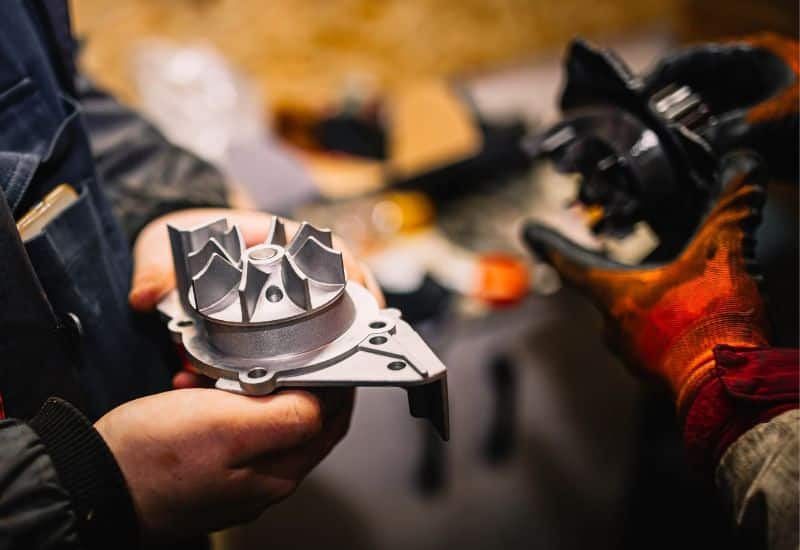
When the water pump leaks, the solution is to replace the gasket. While the gasket itself is cheap, the labor often is not. If the pump is external, this could be a relatively simple fix, although sometimes it requires removing the entire front of the car, which can add to the labor costs. If the pump is internal, replacement is far more costly, as it requires removing the timing belt. It’s a good idea to take the opportunity to replace the belt, tensioner, idlers, and water pump itself if they are due. A timing belt kit with the water pump included will run between $150 and $300. Add in 4 to 5 hours of labor, and you can end up with upward of $1,000 in total replacement cost.
If doing the job yourself, you may find that the old gasket has “disintegrated” in place after many years of use. In this case, a handy tip is to use an old credit card to scrape off the remnants of the old gasket from the cylinder block. Never use anything sharp or metallic to do this, as it might scratch the block. Make sure to get everything off, as any leftover material may prevent the new gasket from sealing properly.
7. Replace the head gasket
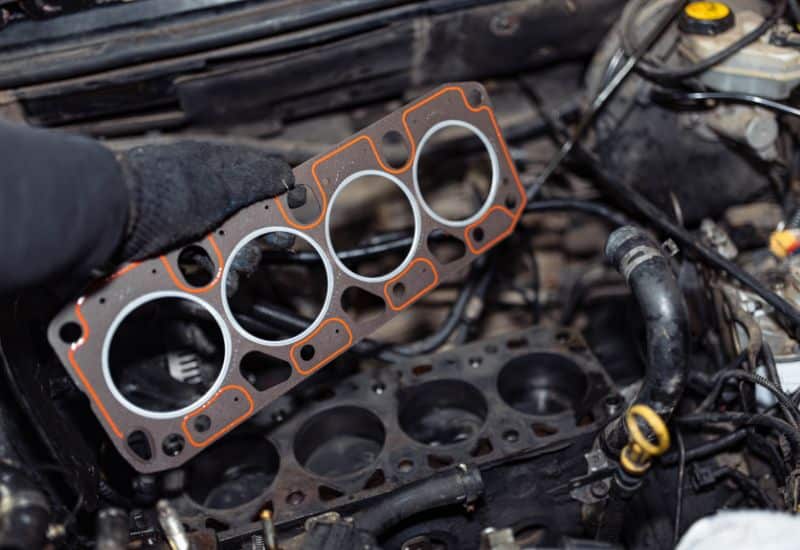
If you have an external leak between the head and the block or excessive pressure in the cooling system from combustion gases entering the coolant, you must replace the head gasket. This is the most expensive fix you may have to do to fix a coolant leak, as it requires cracking open the engine to access internal components. This will normally cost between $1,500 and $2,000 in parts and labor.
FAQs
Is it OK to drive a car with a coolant leak?
That depends on how bad the coolant leak is. If the coolant level is going down slow enough that you can top it off and keep going, you can probably keep driving – but your next stop should be a garage to get the problem looked at and fixed as soon as possible. Driving too long with a coolant leak is never a good idea, as the problem will only get worse with time. If coolant is pouring out of the engine fast, you should probably have the car towed to the shop. Otherwise, you risk running the cooling system dry, which can lead to overheating and permanent engine damage.
Is a coolant leak expensive to fix?
That depends on where the coolant leak is coming from. An external leak from a water hose pipe or the radiator cap can be a very cheap fix, while a replacement radiator can be more expensive. If it’s an internal leak from the head gasket, it will be a very expensive fix, as it requires taking the engine apart, which involves high labor costs.
Can I put tap water in my radiator?
You can fill the coolant system with water in an emergency. However, you should have the system flushed and topped up with antifreeze as soon as possible. There are a few disadvantages to running straight water in your cooling system. The first is that water has minerals that can deposit on the coolant lines over time, creating clogs in the system. This problem is addressed by using distilled or de-ionized water instead of tap water. The second issue is that straight water risks freezing if the temperatures drop below zero degrees Celsius. Coolant or antifreeze has a much lower freezing point.
How often do you need to fill the coolant?
The only real answer is never. The cooling system in your car is supposed to be completely watertight, so if you have to refill the coolant level occasionally, it means you have a coolant leak. It could still be internal, even if you cannot locate a leak. Water could be finding its way into the combustion chambers or the oil system through the head gasket. In some cases, coolant can also find its way outside the engine through the radiator cap due to an overpressure in the system. This can generally be attributed to a leaking head gasket, a bad radiator cap, or a clog in the system.
Is it necessary to change your coolant?
That depends on the manufacturer. Some will recommend flushing and replacing the coolant every five years or a set distance, often 30,000 or 50,000 miles. Some OEMs spec coolant that should last the car’s life and never needs changing. Check your owner’s manual to find out how long your car’s manufacturer needs you to change your coolant.

Written By
Victor Faeda
Victor is a Mechanical Engineer BSc and certified Automotive Mechatronics technician from Portugal. He worked as an intern mechanic for Volvo and has been fixing his own vehicles for over 10 years. Writing and cars are his passion, so now he combines the two by creating content around the automotive industry. He specializes in automotive technology and maintenance.

